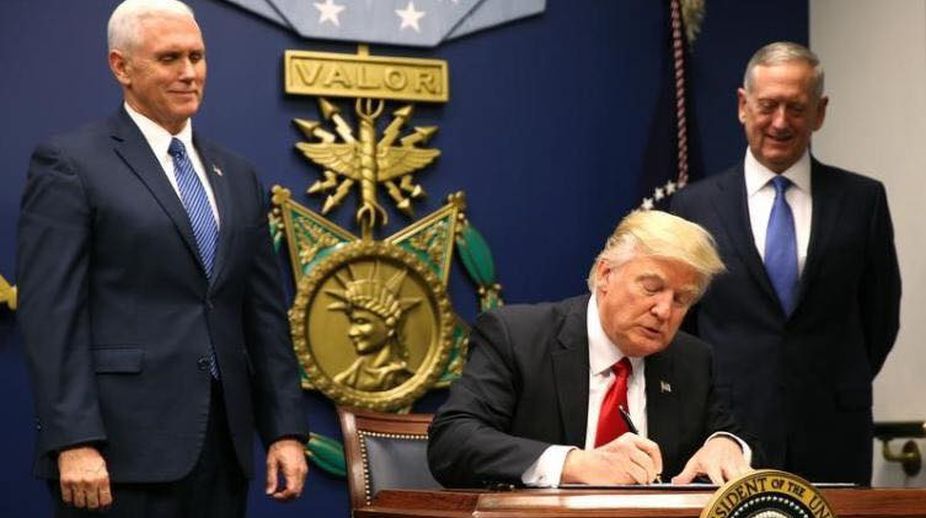Border Message
In the tumultuous landscape of immigration discourse, the resonance of former President Donald Trump's border message extends far beyond his political base.

PHOTO: Facebook
In one of his first actions as President of the United States, Donald Trump ordered his country to withdraw from the controversial Trans Pacific Partnership agreement (TPP). The reason given for the withdrawal was not anti-trade. Instead, the Trump administration directed the United States Trade Representative to negotiate fresh bilateral agreements, instead of the multilateral TPP.
The biggest disadvantage of a multilateral investment treaty is that it takes too much time to get all the countries on board about a host of issues. The second disadvantage is, like with any other trade agreement, some people will be disadvantaged while some will gain. Smaller businesses will not be able to compete with large companies that have been granted broad access by the trade deal. Therefore, they will lay off workers and cut costs. However, this can also happen in bilateral investment treaties (BITs).
The Trump administration needs to ensure that it pays more attention to labour, environment and investor-friendly clauses while negotiating the BITs. The TPP had garnered opposition not only from Trump but also from Hillary Clinton and Bernie Sanders. This opposition stemmed from the TPP’s overly investor-friendly clauses.
Advertisement
Most investment agreements are investor-friendly, whether bilateral or multilateral. The disadvantage of a multilateral treaty is that it gains significant traction in the media due to its sheer size. The TPP for example, included 12 nations that account for 36 per cent of the world GDP. Because it received significant media reporting, potential critics started analyzing particular investor-friendly clauses.
Another misconception that tempted Trump to withdraw was his supposition that the TPP would lead to a loss of US jobs. US industry leaders disagreed with Trump on this point. A study by the Peterson Institute indicated that the TPP would lead to a 9 per cent increase in US exports by 2030. Lastly, apart from increasing trade with Asian countries, the TPP was not only a trade deal. It had clauses on governance, environment, labour and intellectual property. The aim was to highlight these clauses so that other nations, particularly China and India, would be induced to follow.
The US wants a presence in East Asia and presumably doesn't want China to take the lead in the global trade market. Experts have said that Washington will have to be aggressive in negotiating bilateral investments with other Asian countries to maintain its strong presence in Asia.
China is already negotiating the Regional Comprehensive Economic Partnership (RCEP). Now that the US has left the TPP, Australia, the repository of the TPP, wants to make it more appealing by including China. But Japan, due to its differences with China, has vehemently opposed including China in the TPP.
The concern for the US should be to make sure it has an active presence. If the US is not involved in East and Southeast Asia as a facilitator of trade agreements, it would lose ground to China. Trump has been quick in this regard. Days after withdrawing from the TPP, the Trump administration began to negotiate a bilateral investment treaty with Japan.
India too has a huge role to play, now that the US is out of the picture. Due to the documented differences between India and China, India ought to either step up its game or make sure that the US does not lose ground to China. A possible area where India can show its strength is at the WTO. India should also pursue other trade deals. It is already a part of the Chinese RCEP. It may try co-lead a multilateral trade deal with Japan. Japan and India together may be able to lure other nations and help counter the weight of China. In addition, India should think about negotiating trade deals with Australia and the EU.
India should also make sure that the WTO remains the pre-eminent global trade agreement. To negotiate bilateral trade agreements, including one with the US, India may have to accept loosening its agricultural norms, which it has vehemently defended at the WTO.
In summary, the US’s withdrawal from the TPP will be remembered as a U-turn in trade liberalisation. The plan forward for the US seems to be to negotiate bilateral trade agreements with India and Japan to counter China’s regional strength. As experts in the US have said, it is going to be more important now than ever that the US has a strong Asian presence.
The writers are respectively professor of law and a student at the Jindal Global University.
Advertisement